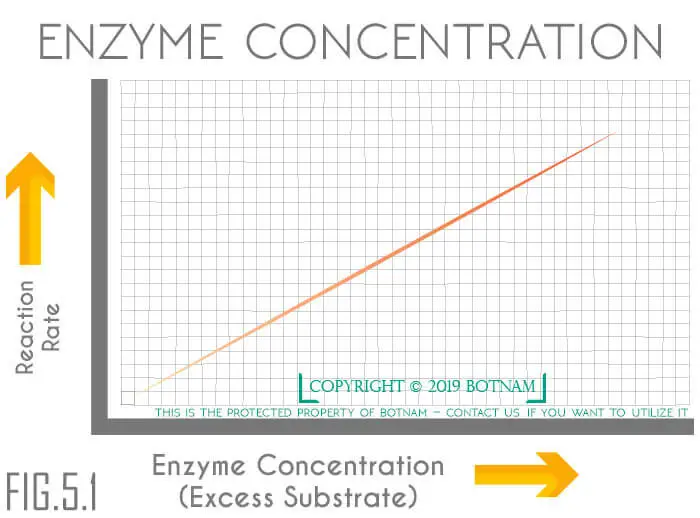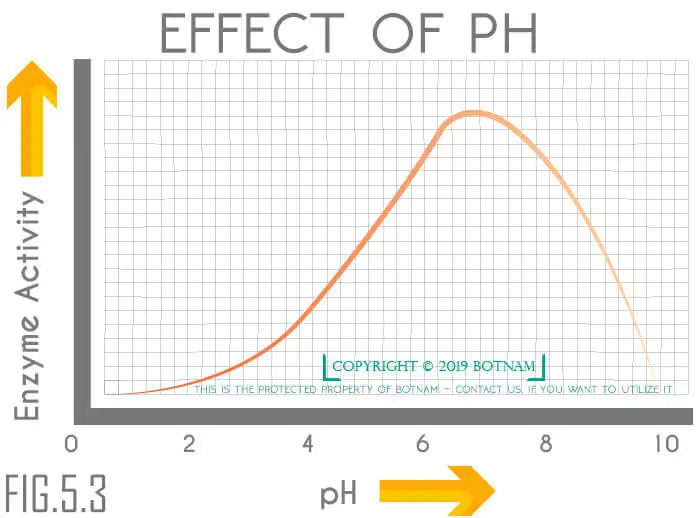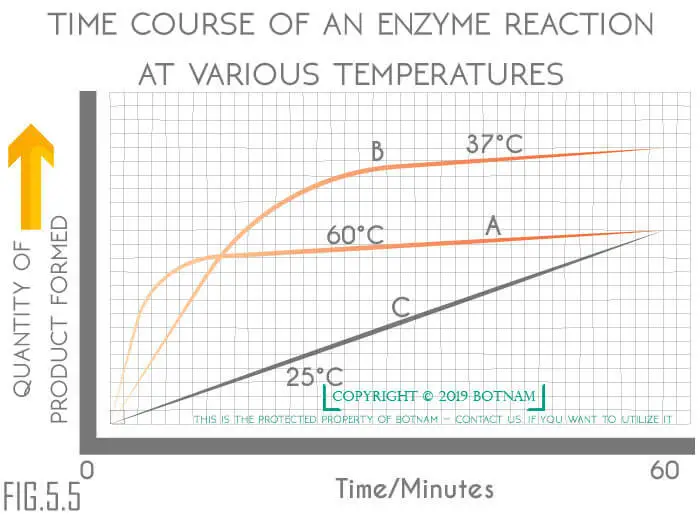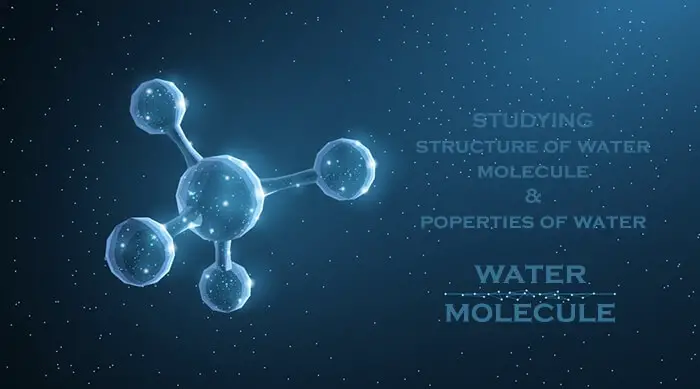What Are Some Factors That Affect Enzyme Activity? 2024
Table of Contents
Catalysis occurs only if the enzyme and substrate form a transient complex i.e. enzyme-substrate complex.
Whereas reaction rate depends on the number of successful collisions between them, which in turn depends upon their concentrations.
What Affects Enzyme Activity?
Taking into consideration these rules we will try to understand the influence of different factors affecting enzymes and how these factors can affect enzyme activity.
List Factors That Affect Enzyme Activity
Here is a list of 6 factors that affect enzyme activity:
- Enzyme Concentrations
- Substrate Concentration
- Effect of pH On Enzyme Activity
- Effect Of Temperature
- Reaction Products
- Enzyme Inhibition
Effect Of Enzyme Concentration On Enzyme Activity
One enzyme molecule can transform one molecule of its substrate per unit of time. Thus, the rate of reaction depends directly on the amount of enzyme.
An increase in the concentration of enzyme will increase the reaction rate. The number of active sites increases with the increase of the enzyme molecules.
So, more active sites will convert more substrate into products in the given period of time. Thus, an increase in the reaction rate is directly proportional to the amount of enzyme present (Fig.5.1)
Enzyme Concentration Graph
Effect Of Substrate Concentration On Enzyme Activity
Substrate concentration has a two-fold effect on the reaction rate. At low concentrations of substrates, the reaction rate is directly proportional to the substrate available.
If the enzyme is kept constant and the amount of substrate is increased, a point is reached when a further increase in the substrate does not increase the rate of reaction anymore.
This is because at a high substrate level all the active sites of the enzyme are occupied and a further increase in the substrate does not increase the reaction rate (Fig.5.4).
Substrate Concentration Graph
How Does pH Affect Enzyme Activity
Optimum pH refers to the narrow range of pH on which every enzyme functions most effectively. Since enzymes are proteins slight change on either side of the optimum pH modifies its effect on the substrate.
Change in pH has two ways to affect the reaction rate. A slight change in pH can stimulate ionization of the amino acid’s residences at the active center which may prevent its proper attachment with the substrate.
The same is true for the substrate. Moreover, it also affects the ionization of the substrate. Under these changed conditions enzyme activity is either restricted or blocked altogether. This reduces the reaction rate.
The extreme change in pH can cause the bonds in the enzymes to break resulting in the denaturation of the enzyme. This checks the reaction rate forever (Fig.5.3).
Effect Of pH On Enzyme Activity Graph
Effect Of Temperature On Enzyme Activity
As opposed to mammals and birds, plants cannot regulate their temperatures. As a result, all reactions in them are strongly influenced by external temperatures.
In general, reactions catalyzed by enzymes increase with temperature from 0°C to 35 or 40°C (Fig.5.10).
The increase in reaction rate is partly because heat increases the number of molecules that have energy equal to or greater than the energy of activation.
Yet because the reaction rate so strongly depends on catalysis by the enzyme, temperature also affects reactions by changing the shape of the enzyme.
The enzyme’s shape determines its ability both to combine with the substrate and to cause catalysis thus effects directly reaction rate.
Enzyme Temperature Graph
An organism’s growth and reproduction vary greatly with temperature, and for any given species this may depend on the optimum temperature for the action of certain enzymes that control rate-limiting reactions.
How Does High Temperature Affect Enzyme Activity?
If the temperature is raised above a certain value, the reaction rate begins to decrease because of the denaturation of most enzymes (Fig.5.2).
What Is The Effect Of Low Temperature On Enzyme Activity?
Similarly, low temperatures can also denature certain enzymes. Various enzymes, even from a single species, often differ greatly in their response to temperature.
This means that at any given temperature some enzymes function optimally or nearly so, whereas many others function far less than their optimal status.
This phenomenon appears to be especially important in species that are sensitive to chilling. This difference in the temperature effect on different enzymes helps in determining the environment in which different species can live.
For example, the overall temperature optimum for the process of photosynthesis (catalyzed by many enzymes) in alpine and arctic plants is often 10 to 15°C, whereas the optimum for maize plants is near 30°C as given in the below chart.
Reaction Products
The rate of an enzyme reaction can be determined by measuring the rate of disappearance of substrate or the rate of product appearance, or both.
By either method, the reaction is usually observed to proceed more slowly as time passes.
This decrease in rate is sometimes caused by the denaturation of the enzyme while the reaction is being measured, but other factors are also involved.
One of the most important factors is the continuous decrease in the concentration of substrate and/or accumulation of products.
As products accumulate, their concentrations sometimes become high enough to cause appreciable reversibility of the reaction, provided that the relative chemical potentials of products and reactants allow reversibility.
In some cases, i.e., in forward reaction, the reaction products inhibit catalysis in enzymes by combining with the enzyme in such a way that further formation of the enzyme-substrate complex is inhibited.










